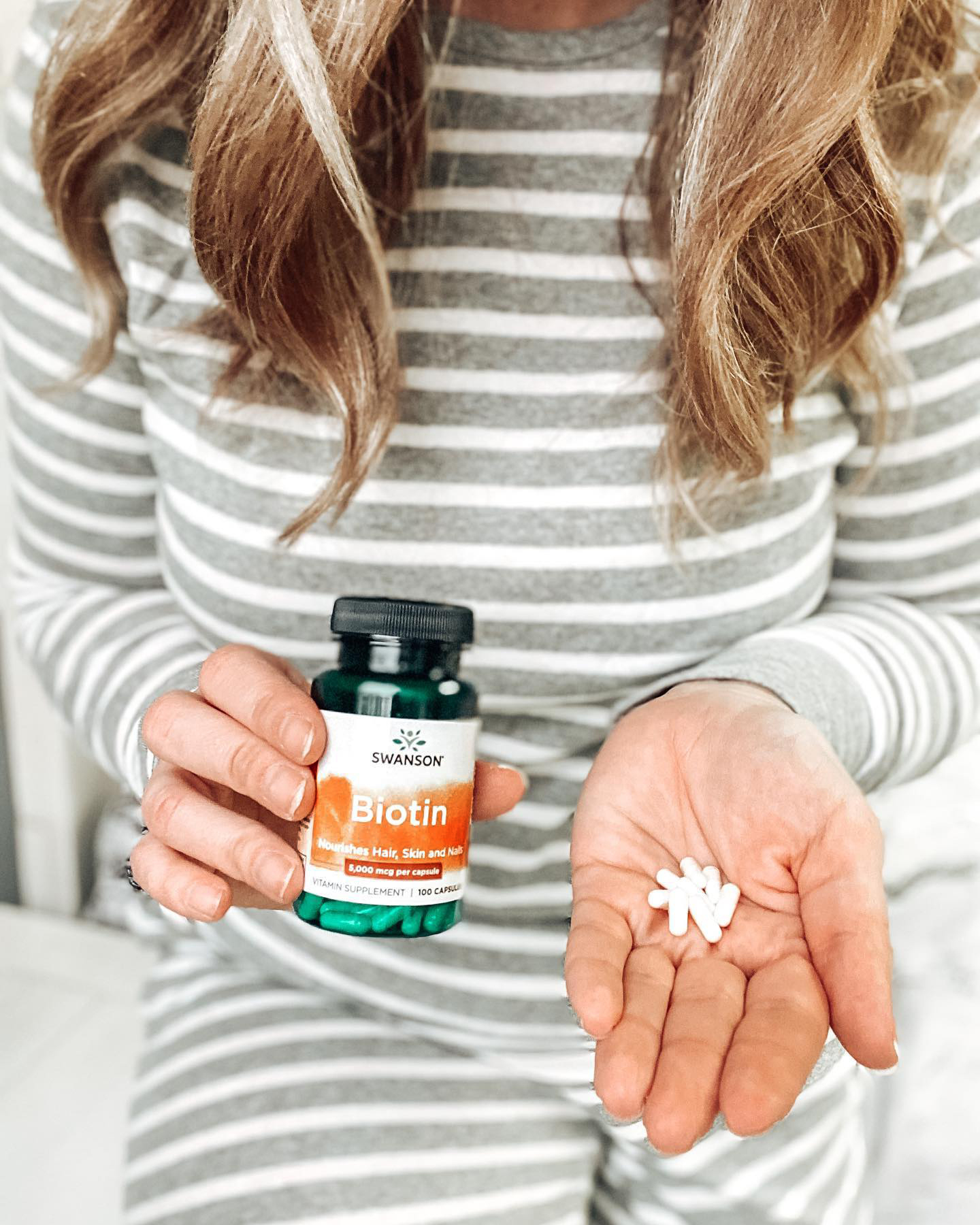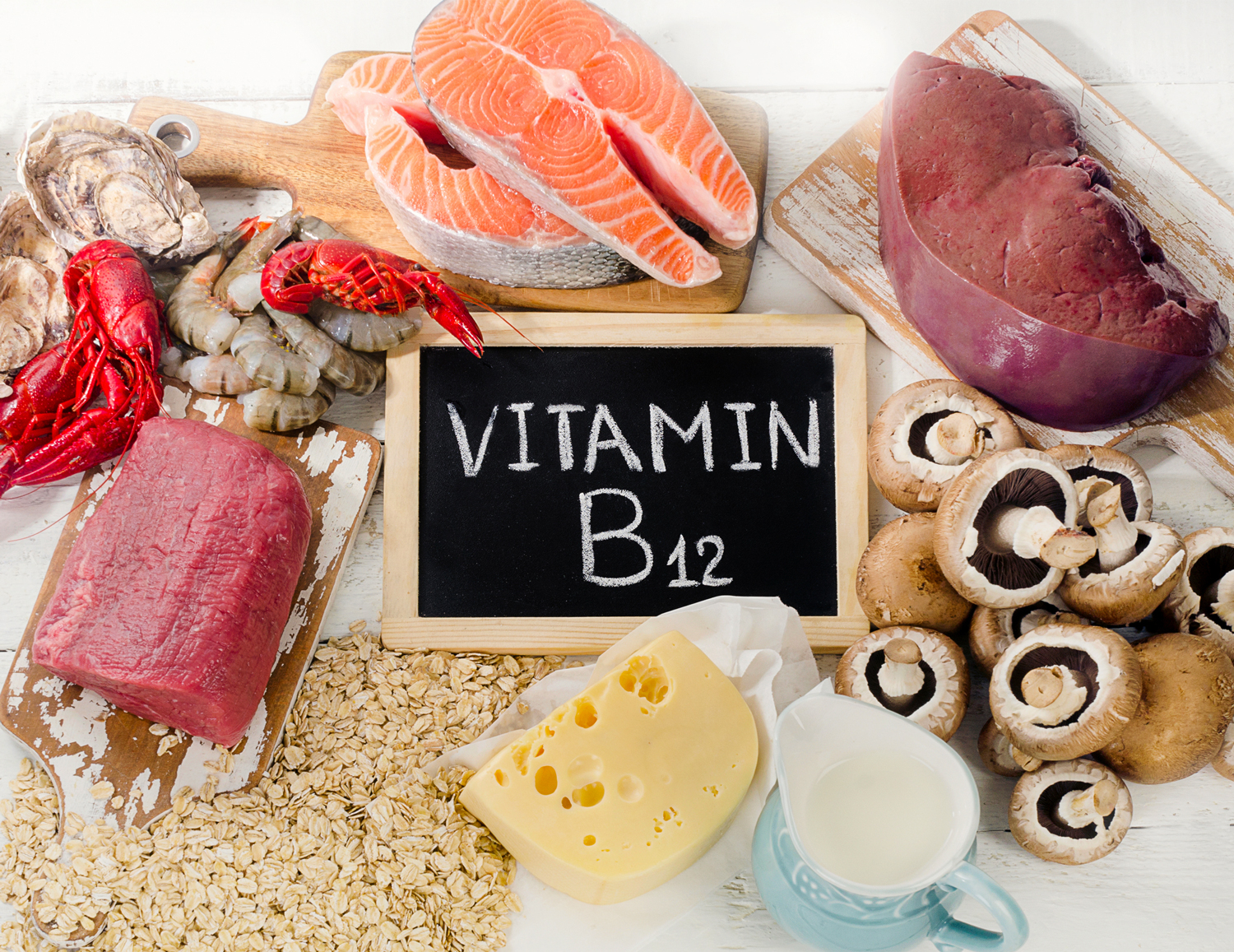Your Complete Guide to B Vitamins
Do you know your B vitamins? You should; they’re essential to your overall health! Use this B-complex vitamins guide to learn about the benefits of B vitamins, including what each one does, food sources of B vitamins and how to make sure you get enough in your diet.

Meet the (B Vitamin) Family!
There are eight B vitamins, each serving different roles in the body and offering their own special benefits. But while they’re all different, they still work together to complete some of the most vital functions in the body and play an important role in cell metabolism. Together, the B vitamins form a class of water-soluble nutrients which are often referred to as an entire unit: the B-complex vitamins.
B-Complex Vitamins
The discovery of vitamins was a major achievement in the history of wellness research. While physicians and researchers had previously linked healthy eating to healthy bodies, they soon realized there was more to the story and began isolating various nutrients in food to better understand their chemical structure and potential impacts on our health.
Initially, scientists thought vitamin B was a single nutrient, but much later they discovered that there are many nutrients in the B-complex family of vitamins and gave them all designated numbers as they began to explore their roles in the body.1
What Do B Vitamins Do?
B-complex vitamins are essential for converting food (carbohydrates) into fuel (glucose), making them popular as energy boosters. They also help promote optimum mental wellness13 and physical health, help protect against free radicals and support cardiovascular nutrition.
Likewise, all B vitamins are water soluble, which means the body does not store them like it does with fat-soluble nutrients, so you need to replenish your body’s supply of B vitamins continually.
Let’s dive deeper into what makes each B vitamin unique and where you can find them.
Vitamin B1 (Thiamin)
Thiamin was the first B vitamin discovered, which is why it’s called vitamin B1. Thiamin plays an important role in forming adenosine triphosphate (ATP), which every cell uses for energy.2 Thiamin plays an important role in supporting the brain as part of a healthy aging process,14 and it also supports nervous system function and is sometimes referred to as an “anti-stress” vitamin because it may promote immune health and help the body when under stress.2
Food Sources of Vitamin B1
- Pork
- Beef
- Poultry
- Liver and organ meats
- Whole grains or enriched grain products
- Legumes
- Wheat germ
- Brewer’s yeast
- Nuts
- Blackstrap molasses
For healthy adults, the daily recommended dietary allowance (RDA) of thiamin is 1.2 mg for males and 1.1 mg for females.2
Vitamin B2 (Riboflavin)
In addition to promoting energy production by helping the body break down fats and other external materials,14 riboflavin works as an antioxidant that helps protect against free radicals.3 Riboflavin also helps convert vitamin B6 and folate into forms the body can use.3 Riboflavin has been shown to promote eye health and support red blood cell production.3
Food Sources of Vitamin B2
- Brewer’s yeast
- Almonds
- Organ meats
- Whole grains
- Wheat germ
- Mushrooms
- Soybeans
- Eggs
- Broccoli
- Brussels sprouts
- Spinach
For healthy adults, the RDA of riboflavin is 1.3 mg for males and 1.1 mg for females.3
Vitamin B3 (Niacin)
Niacin, or vitamin B3, is involved in the production of many stress-related hormones and may promote heart health and healthy circulation.4 Like the other B-complex vitamins, niacin is essential for producing necessary energy for organs throughout the body.14
Food Sources of Vitamin B3
- Behttps://www.swansonvitamins.com/p/swanson-organic-certified-organic-beet-juice-powder-5-3-oz-150-grams-pwdrets
- Brewer’s yeast
- Beef liver and kidney
- Fish like salmon, swordfish and tuna
- Sunflower Seeds
- Peanuts
Foods that contain tryptophan may also be a source of niacin because the body converts the amino acid tryptophan into niacin.4 Tryptophan is found in many types of meat and dairy products.
For healthy adults, the RDA of niacin is 16 mg for men and 14 mg for women.4
Vitamin B5 (Pantothenic Acid)
Pantothenic acid helps the body break down fats and carbohydrates for energy,5 in addition to helping the body produce coenzyme A which is needed for the metabolism of fatty accids into energy.14 This vitamin also supports cellular health and the production of red blood cells, promotes digestive system health and helps the body use other nutrients, including vitamin B2.5 It may also support skin health and healthy blood lipid levels.5
Food Sources of Vitamin B5
Pantothenic acid is found in a wide variety of foods. Unfortunately, the amount of vitamin B5 decreases during processing. Processed foods, like canned and frozen goods, have less pantothenic acid than fresh, unprocessed foods.6
- Beef and organ meats
- Poultry
- Brewer’s yeast
- Cauliflower
- Kale
- Broccoli
- Tomatoes
- Avocado
- Legumes
- Sweet potatoes
- Sunflower seeds
- Whole grains
- Wheat germ
- Salmon
There is no established RDA for vitamin B5, but experts recommend 5 mg per day for healthy adults.5
Vitamin B6 (Pyridoxine)
Pyridoxine is a heart-healthy B vitamin that works together with vitamin B12 and folic acid to keep homocysteine levels in check.7 It’s necessary for healthy brain development and function,14 supporting the production of several neurotransmitters, including serotonin and norepinephrine, which support mood health, and melatonin, which helps regulate sleep and wake cycles.7
Food Sources of Vitamin B6
- Poultry
- Tuna
- Salmon
- Shrimp
- Beef liver
- Milk
- Cheese
- Lentils
- Beans
- Spinach
- Carrots
- Brown rice
- Bran
- Sunflower seeds
- Wheat germ
- Bananas
For healthy men and women aged between 19 and 50 years, the RDA of vitamin B6 is 1.3 mg. For adults over 50 years, the RDA is 1.7 mg for men and 1.5 mg for women.7
Vitamin B7 (Biotin)
Vitamin B7 is better known as biotin. It's sometimes referred to as Vitamin H after the German words haar (hair) and haut (skin) because of biotin's benefits for hair and skin.8 This B-complex vitamin helps convert food into fuel so the body can produce energy, and also helps regulate signals between cells throught the nervous system.14 Biotin is best known for promoting hair, skin and nail health.9 It's called “The Beauty Nutrient” for a reason!
Food Sources of Vitamin B7
- Brewer’s yeast
- Eggs
- Sardines
- Nuts like almonds, peanuts, pecans and walnuts
- Soybeans
- Beans
- Whole grains
- Cauliflower
- Bananas
- Mushrooms
There is no RDA for vitamin B7, but the Food and Nutrition Board has established an Adequate Intake (AI) of 30 mcg of B7 per day for healthy adults.10
Vitamin B9 (Folate vs Folic Acid)
Vitamin B9 is a crucial prenatal vitamin. It supports cell growth, DNA synthesis and red blood cell production.11 It also helps your body use iron properly.11
What is folate?
Folate is the naturally-occurring form of the vitamin B9 found in foods.
What is folic acid?
Folic acid refers to the synthetic form of folate used in many supplements and fortified foods.
Women who consume healthful diets with adequate folate throughout their childbearing years may reduce their risk of having a child with a birth defect of the brain or spinal cord.
Sources of folate include fruits, vegetables, whole grain products and fortified cereals.
Food Sources of Folate
- Dark leafy greens
- Asparagus
- Turnips
- Beets
- Brussels sprouts
- Lima beans
- Soybeans
- Beef Liver
- Brewer’s yeast
- Root vegetables
- Whole grains
- Salmon
- Orange juice
- Avocado
- Milk
- Legumes14
For healthy adults, the RDA of folic acid is 400 mcg.11 For pregnant women, the RDA is 600 mcg.11
Vitamin B12 (Cobalamin)
Vitamin B-12 promotes cardiovascular health by helping break down the protein homocysteine,14 while also supporting healthy nerve cell development and function.12,14 Like all B vitamins, it plays a role in energy metabolism. It also works with vitamin B9 (folate) to support red blood cell production and help iron work properly in the body.12 Vitamins B9 and B12 also work together to produce S-adenosylmethionine (SAMe), which supports immune function and mood.12
There are four forms of vitamin B12: cyanocobalamin, hydroxocobalamin, adenosylcobalamin and methylcobalamin. The two most popular forms are cyanocobalamin and methylcobalamin.
Methylcobalamin exists in nature. It’s typically more bioavailable than other forms because the body can use it as is, instead of having to first convert it.
Cyanocobalamin is the synthetic, less expensive version of vitamin B12. The body converts cyanocobalamin into methylcobalamin before using it.
Vitamin B12 gets a lot of attention because, unlike the other B-complex vitamins, B12 can only be found in adequate amounts through animal products. Some plant sources, such as algae like chlorella, contain vitamin B12, but it’s unclear whether the human body can absorb it from those sources. That means vegetarians and vegans may not get enough vitamin B12 without supplements.
Food Sources of Vitamin B12
- Organ meats
- Salmon14
- Shellfish
- Eggs
- Beef
- Pork
- Poultry
- Dairy products
- Wild game
For healthy adults, the RDA of vitamin B12 is 2.4 mcg.12
B-Complex Vitamins & Beyond
B-complex vitamins support health and vitality in so many ways, but the rest of the alphabet vitamins are just as important! Learn all about them in the post Amazing Alphabet Vitamins: The Six Vitamins You Need to Know.
*These statements have not been evaluated by the Food and Drug Administration. These products are not intended to diagnose, treat, cure, or prevent any disease.

About Lindsey Toth, MS, RD
Lindsey is a nationally recognized registered dietitian and nutritionist with a soft spot for ice cream. She empowers people to take charge of their health by finding the balance between the pleasure and nourishment in food. Her philosophy is that you should take care of your body because it’s the only permanent home you have. It’s what inspired her to pursue a career in nutrition.
Sources
1. Vitamin B-Complex. PeaceHealth. Read source
2. Vitamin B1. Harvard School of Public Health. Read source
3. Brazier, Y. Benefits and Sources of Vitamin B2. Medical News Today. November 22, 2023. Read source
4. Vitamin B3. Harvard School of Public Health. Read source
5. Vitamin B5. Harvard School of Public Health. Read source
6. Pantothenic Acid. National Institutes of Health. Read source
7. Vitamin B6. Mayo Clinic. Read source
8. Biotin for Skin. Healthier Steps. July 18, 2022. Read source
9. McMillen, M. Biotin. WebMD. Read source
10. Biotin (Fact Sheet for Health Professionals). National Institutes of Health. Read source
11. Vitamin B9. Harvard School of Public Health. Read source
12. Vitamin B12. National Library of Medicine. Read source
13. Hanna, S., et al. (2009). Primary Care Companion to the Journal of Clinical Psychiatry, 11(5), 269–270. Read source
14. Naidoo, U. A Neuroscientist Discusses the Benefits of B Vitamins. CNBC. August 5, 2022. Read source




